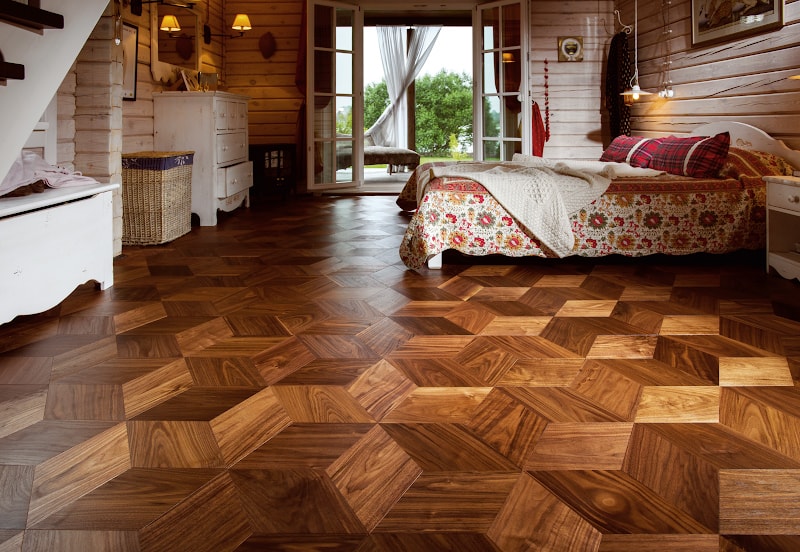When it comes to flooring options, few choices can match the timeless appeal and durability of hardwood. Hardwood flooring has remained a favorite among homeowners for generations, offering not only exquisite aesthetics but also exceptional longevity. In this comprehensive guide, we will take you through every aspect of hardwood flooring, from its types and installation to care and maintenance. Discover the transformative power of hardwood floors and how they can elevate your living spaces.
Introduction to Hardwood Flooring
Hardwood flooring exudes a sense of timelessness and sophistication that few other materials can match. With its natural beauty and inherent strength, hardwood has stood as a hallmark of quality and elegance in the world of interior design. From classic to contemporary settings, hardwood floors seamlessly blend with any decor, adding warmth and character to your living spaces.
Exploring Different Types of Hardwood
Engineered Hardwood: A Modern Marvel
Engineered hardwood is a versatile flooring option that combines the allure of natural wood with enhanced stability. Crafted from layers of real wood veneer and plywood, engineered hardwood is designed to withstand fluctuations in moisture and temperature, making it suitable for various environments, including basements and kitchens.
Solid Hardwood: A Classic Choice
Solid hardwood, the epitome of tradition, is crafted from a single piece of wood. This type of flooring exudes authenticity and can be sanded and refinished multiple times, ensuring its longevity. Solid hardwood is an ideal choice for living areas, bedrooms, and hallways, where its natural beauty can shine.
Exotic Hardwood: Unveiling Unique Beauty
Exotic hardwood flooring introduces the allure of rare wood species to your interiors. With striking grain patterns and rich colors, these floors make a statement. While slightly pricier, the unique aesthetics and remarkable durability of exotic hardwoods are well worth the investment.
The Installation Process
Preparing for Installation
Before installation, it’s essential to acclimate the hardwood planks to the environment in which they’ll be installed. This minimizes the risk of warping or expansion post-installation. Ensure that the subfloor is clean, level, and free of moisture to guarantee a smooth installation process.
Nail Down vs. Glue Down vs. Floating: Choosing the Method
The installation method depends on the type of hardwood flooring you’ve chosen. Nail-down installation involves securing planks to the subfloor using nails, while glue-down involves adhering planks using adhesive. Floating installation, popular with engineered hardwood, allows planks to interlock without direct attachment to the subfloor.
DIY vs. Professional Installation
While DIY installation is an option for those with experience, professional installation ensures precision and minimizes the risk of mistakes. Professional installers possess the expertise and tools required to tackle challenging layouts and create a flawless end result.
Advantages of Hardwood Flooring
Timeless Elegance and Aesthetic Versatility
Hardwood flooring transcends trends, making it a versatile choice for various interior design styles. Whether your decor is traditional, modern, or eclectic, hardwood floors effortlessly complement your aesthetic vision.
Durability that Stands the Test of Time
Hardwood is renowned for its longevity. With proper care and maintenance, hardwood floors can last for generations, retaining their beauty and structural integrity. Unlike some other flooring options, hardwood doesn’t wear out easily and can be refinished to restore its original luster.
Improved Indoor Air Quality
Unlike carpets that trap allergens and dust, hardwood floors are hypoallergenic and contribute to better indoor air quality. They don’t harbor pet dander, pollen, or mold, making them an excellent choice for individuals with allergies or respiratory sensitivities.
Easy Maintenance and Longevity
Regular sweeping and occasional damp mopping are usually sufficient to keep hardwood floors clean. Additionally, hardwood floors are resistant to stains and spills, simplifying cleanup. Their durability minimizes the need for replacements, saving you money in the long run.
Caring for Your Hardwood Floors
Regular Cleaning Practices
Maintaining the beauty of hardwood floors requires regular cleaning. Use a soft broom or microfiber mop to remove dust and debris. Avoid excessive moisture, as standing water can damage the wood. Use a manufacturer-recommended hardwood floor cleaner for routine mopping.
Dealing with Scratches and Minor Damage
While hardwood is resilient, scratches and minor damage can occur over time. Use felt pads under furniture legs, and avoid dragging heavy objects across the floor. For minor scratches, use a wood touch-up pen or filler that matches the floor’s color.
Refinishing: A Fresh Lease on Life
Over the years, hardwood floors may develop wear patterns or lose their sheen. Refinishing involves sanding down the top layer of the wood and applying a new finish. This process revitalizes the floor’s appearance and extends its lifespan.
Hardwood Flooring FAQs
Can hardwood floors be installed in moisture-prone areas?
Yes, engineered hardwood is suitable for areas with higher humidity, such as basements or bathrooms. Its layered construction offers enhanced resistance to moisture-related issues.
Is it possible to change the color of hardwood floors?
Yes, hardwood floors can be refinished to change their color. You can choose a different stain to achieve the desired hue while preserving the wood’s natural beauty.
How often should hardwood floors be refinished?
The frequency of refinishing depends on factors like foot traffic and wear. On average, hardwood floors may need to be refinished every 10 to 15 years.
Are hardwood floors suitable for homes with pets?
Yes, hardwood floors are a viable option for homes with pets. However, consider harder wood species that are more resistant to scratches. Regular nail trimming and using rugs in high-traffic areas can also help protect the floors.
What is the lifespan of hardwood flooring?
With proper care

